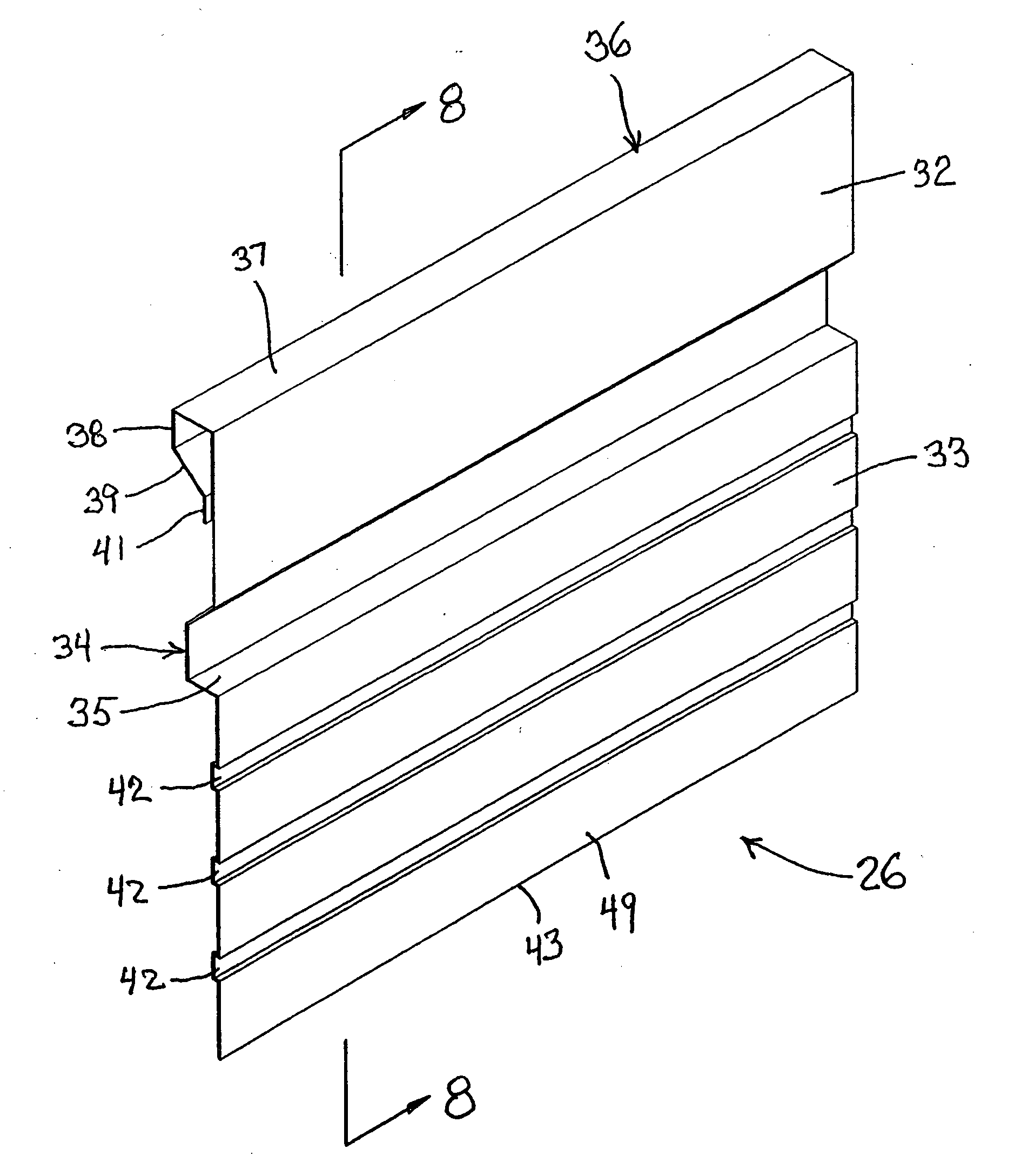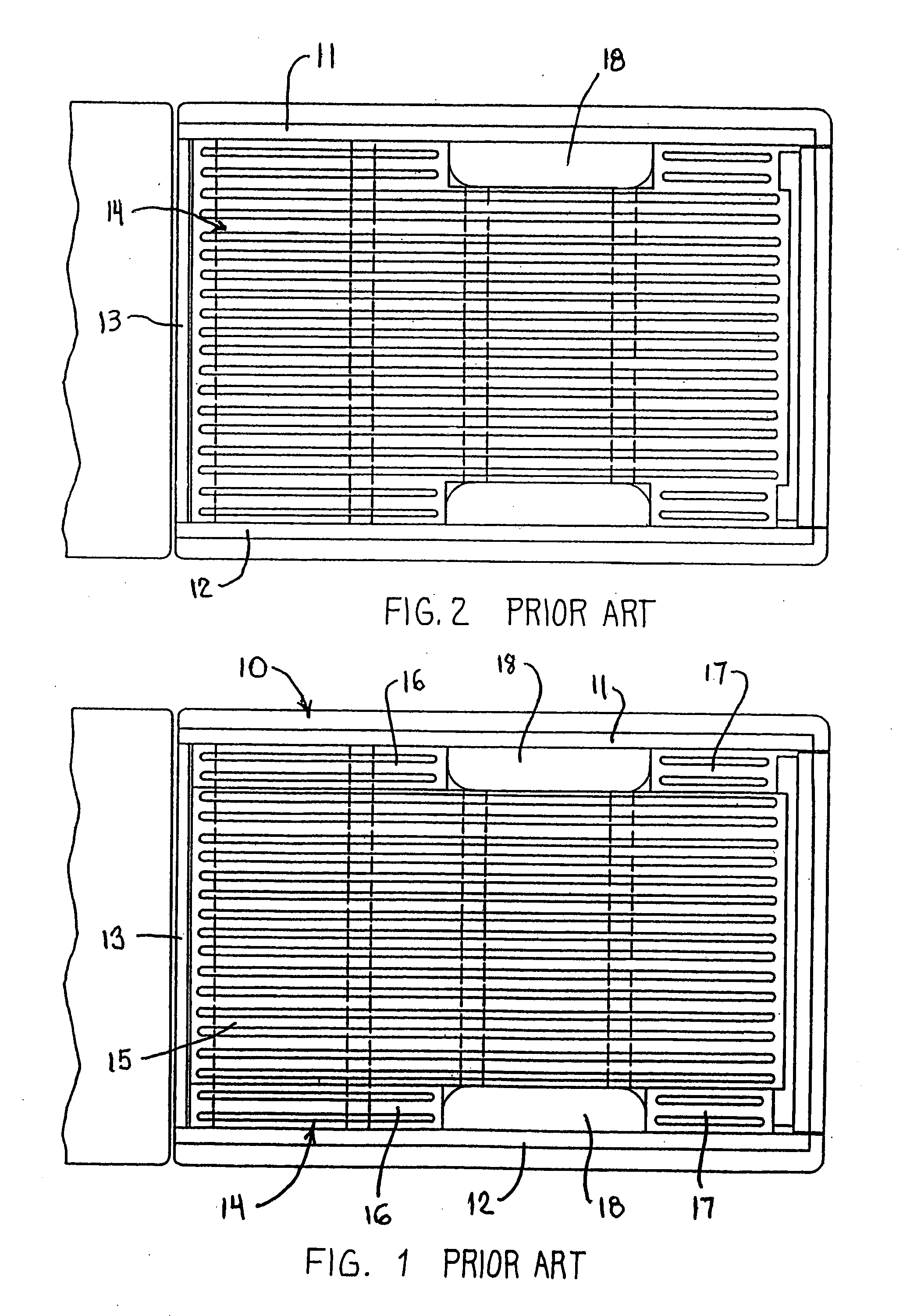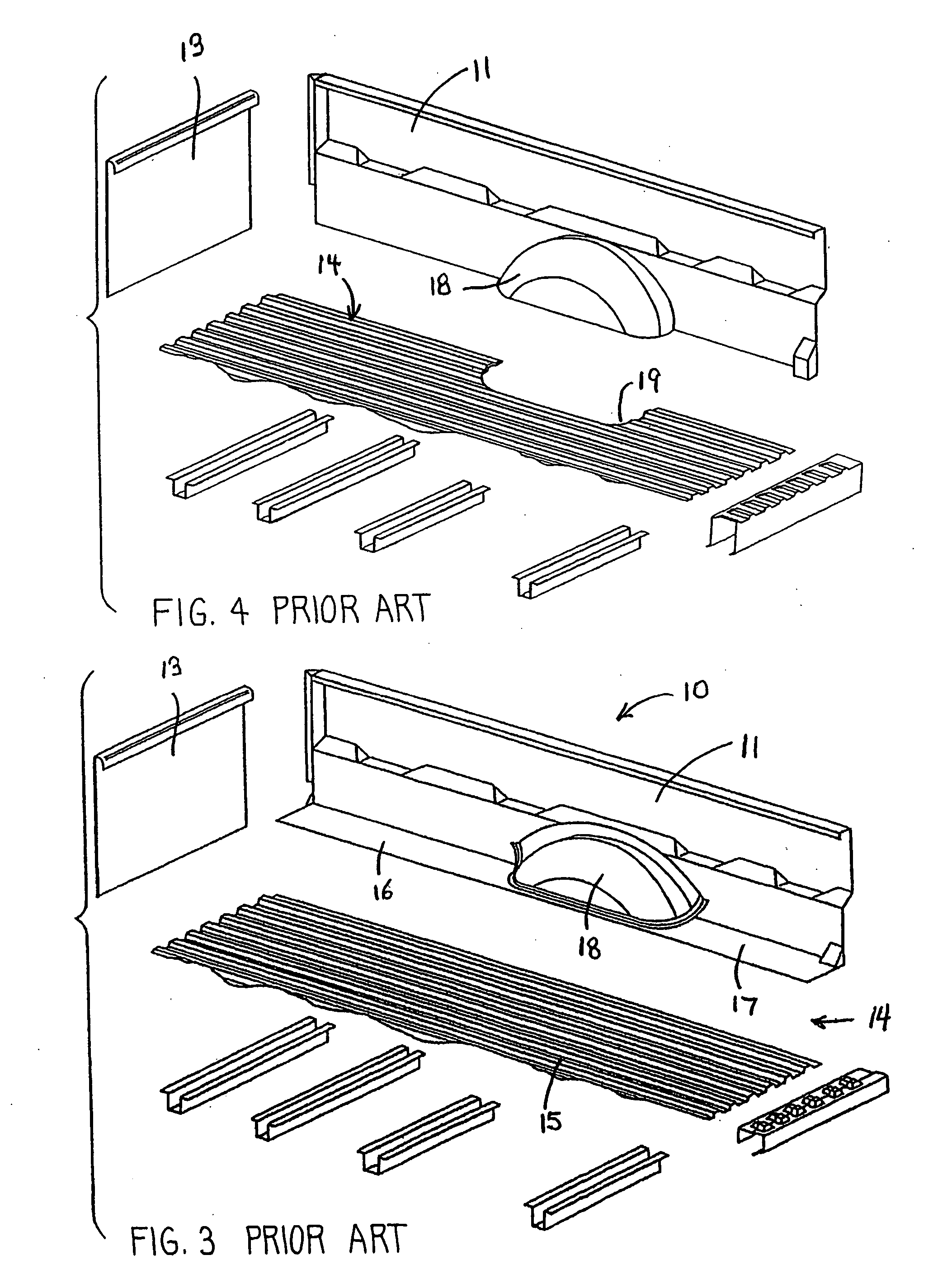Roll-formed panels for vehicle box assembly
a box assembly and roll-formed technology, applied in the direction of superstructure subunits, loading-carrying vehicle superstructures, monocoque constructions, etc., can solve the problems of unsatisfactory structural and economic factors, unsatisfactory surface stretch marks or blemishes, and formed members having greater weight than desired
- Summary
- Abstract
- Description
- Claims
- Application Information
AI Technical Summary
Problems solved by technology
Method used
Image
Examples
first embodiment
[0051] Referring to FIGS. 5 and 6, there is illustrated an improved vehicle box assembly 21, specifically a box assembly for a pickup truck, according to the present invention.
[0052] The box assembly 21 includes a bed or floor pan arrangement 22 which is supported on a plurality of support or cross rails extending transversely thereunder, including a front cross rail 23 disposed adjacent the forward end of the floor, one or more generally parallel intermediate cross rails 24 disposed in rearwardly spaced but generally parallel relationship beneath the floor, and a rear cross rail 25 which supportingly engages the floor beneath the rear edge thereof. An inner upright front panel 26 projects upwardly from the floor adjacent the front end of the box assembly, and opposed right and left inner upright side panels 27 project upwardly from opposite sides of the floor and have their forward edges rigidly joined to opposite ends of the front panel 26. Only the right side panel is illustrated...
second embodiment
[0089] Referring now to FIGS. 17-18, there is illustrated a box assembly 121, particularly for a pickup truck, according to the present invention.
[0090] The box assembly 121 again includes a floor or bed 122 supported on a plurality of underlying cross rails such as a front rail 123, plural intermediate rails 124 and a rear rail 125. An upright front panel 126 projects upwardly adjacent a front edge of the bed 122, and a side panel 127 projects upwardly adjacent each side of the bed, with a wheel well housing 128 cooperating between each side panel 127 and the respective side portion of the bed 122. The rear edge of the side panel cooperates with an upright or post 129.
[0091] In the box assembly 121, the bed 122 is defined by multiple bed sections, including a main center bed section 131 which extends lengthwise throughout the full length of the bed but has a width which is sized so as to extend generally only between the wheel wells, whereby the center bed section 131 has a genera...
third embodiment
[0100] the invention is illustrated by FIG. 22. The vehicle box assembly 161 illustrated in exploded view in FIG. 22, when assembled, will have the same appearance as shown by FIG. 18. The box 161 of FIG. 22 utilizes many of the same constructional features utilized in the box assembly of FIGS. 17-18, and hence corresponding parts thereof are identified by the same reference numerals and will not be separately discussed.
[0101] The principal difference between the box assembly 161 of FIG. 22 and the box assembly 121 of FIGS. 17-18 is the fact that the box assembly 121 (FIGS. 17-18) utilizes a one-piece press-formed inner quarter panel 135 for defining side panel 127, wheel well housing 128 and side bed section 131A. In contrast, the box assembly 161 of FIG. 22 utilizes a two-piece construction for defining these same functional members, namely a monolithic one-piece roll-formed panel member 162 which defines both the side panel 127′ and the side bed section 131A′ (herein referred to ...
PUM
 Login to View More
Login to View More Abstract
Description
Claims
Application Information
 Login to View More
Login to View More - R&D
- Intellectual Property
- Life Sciences
- Materials
- Tech Scout
- Unparalleled Data Quality
- Higher Quality Content
- 60% Fewer Hallucinations
Browse by: Latest US Patents, China's latest patents, Technical Efficacy Thesaurus, Application Domain, Technology Topic, Popular Technical Reports.
© 2025 PatSnap. All rights reserved.Legal|Privacy policy|Modern Slavery Act Transparency Statement|Sitemap|About US| Contact US: help@patsnap.com



